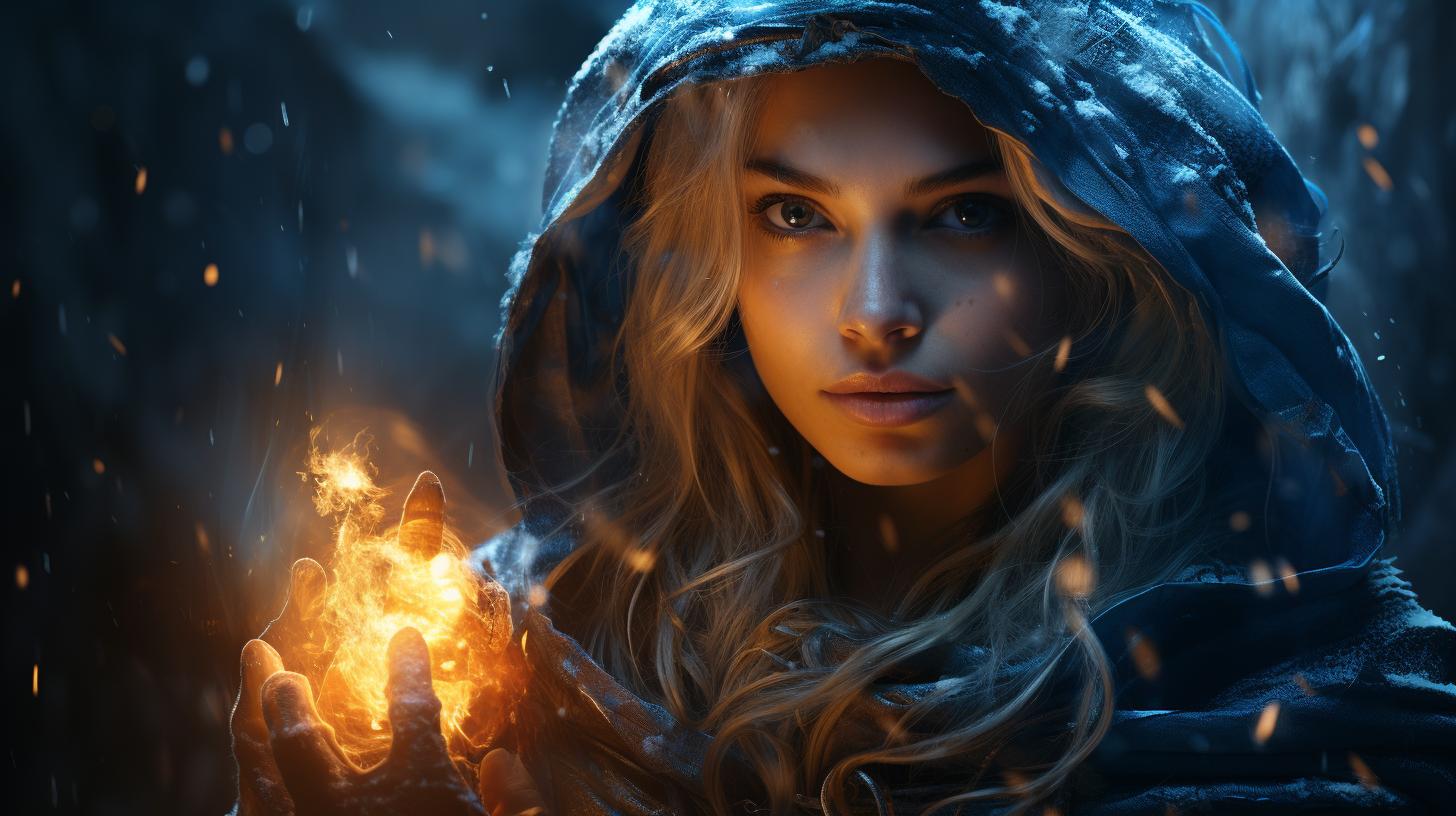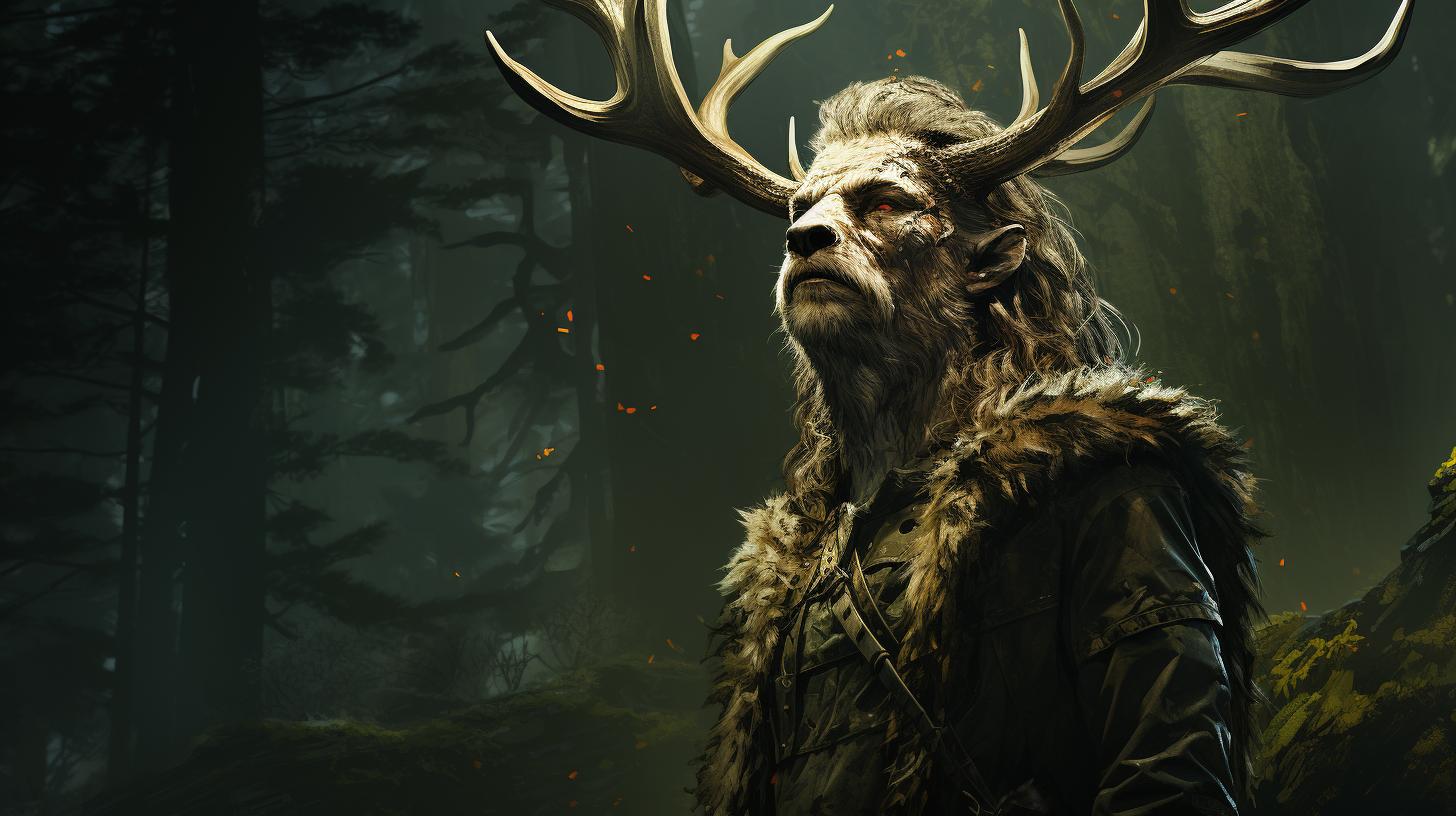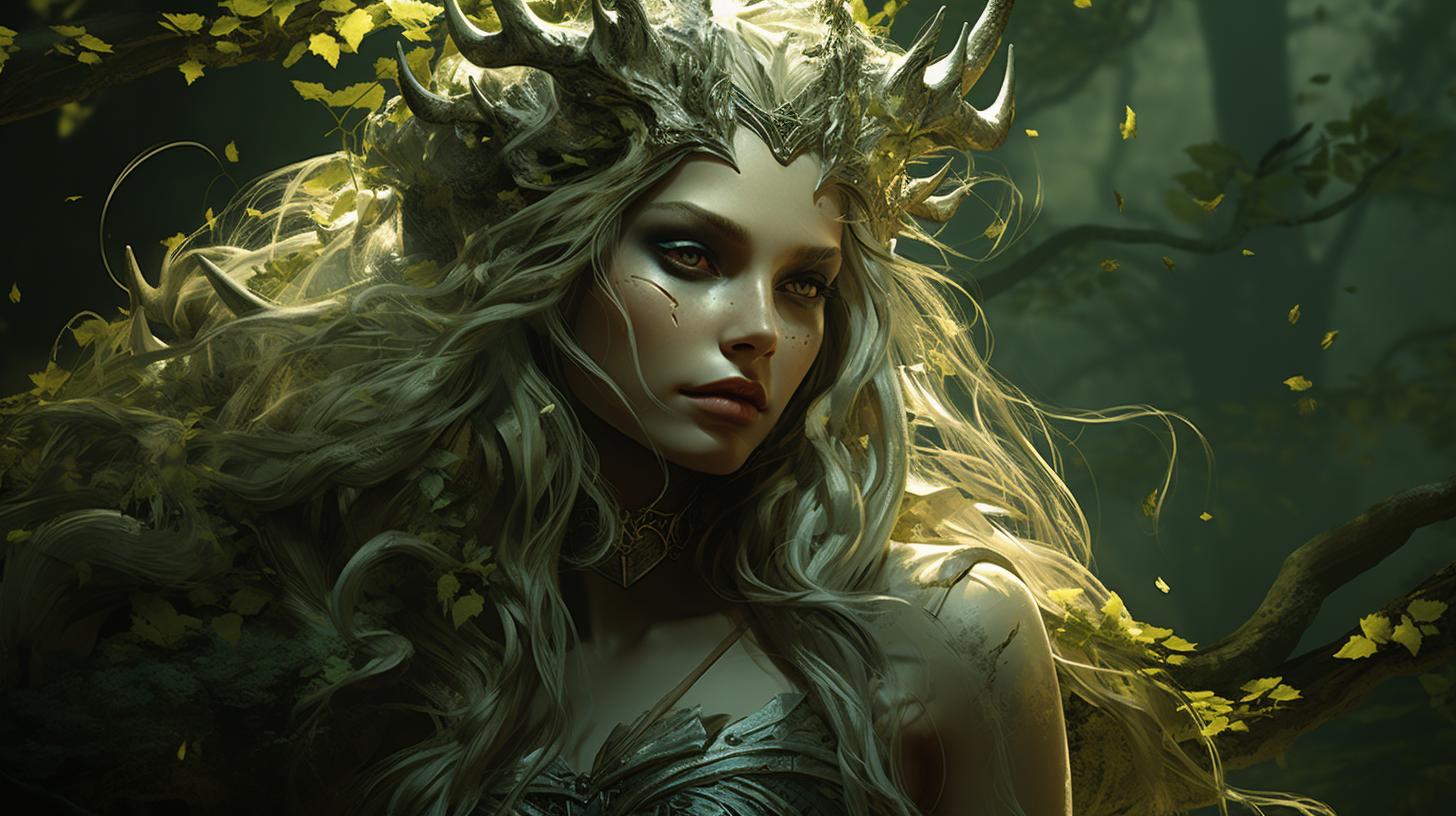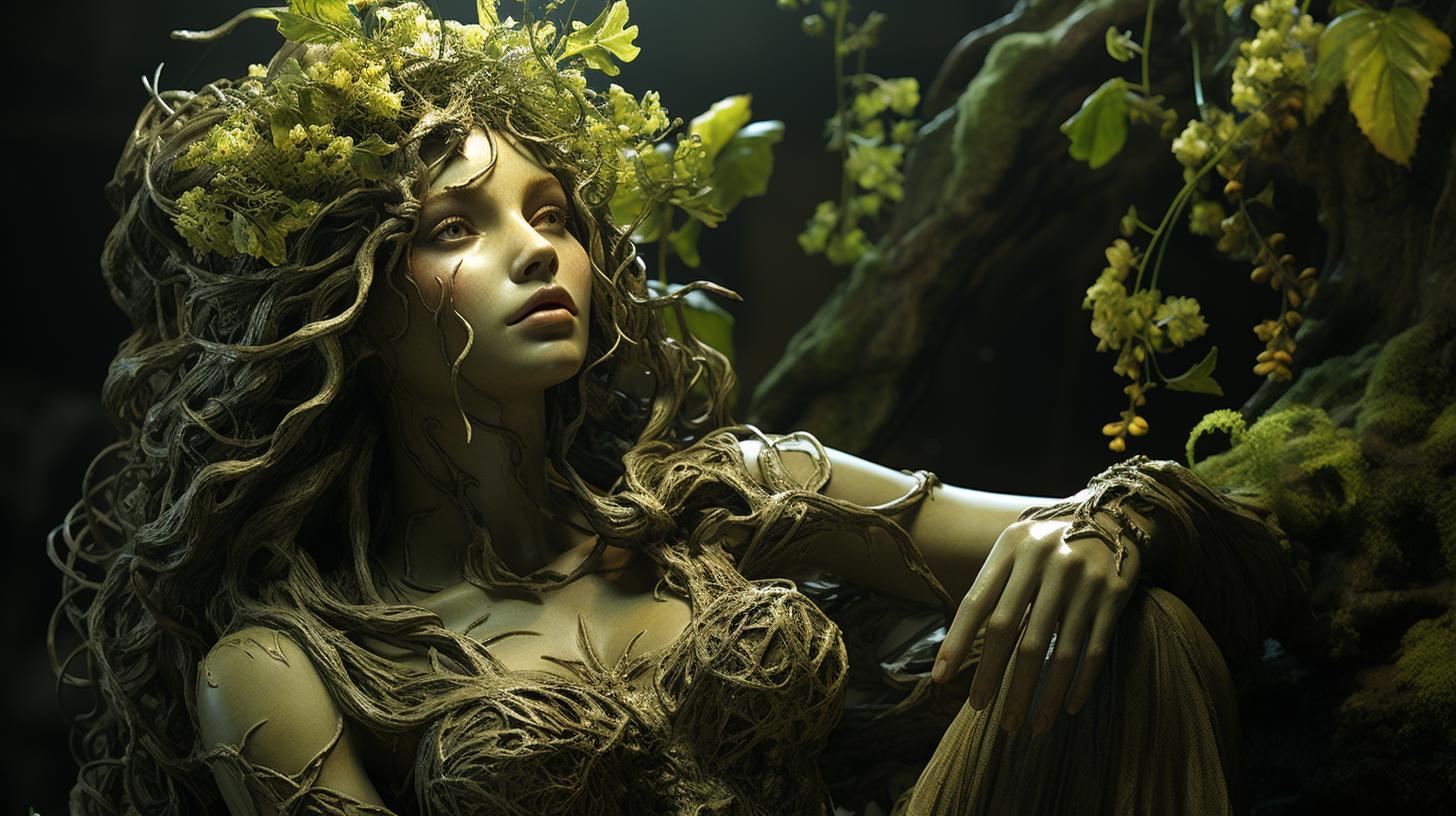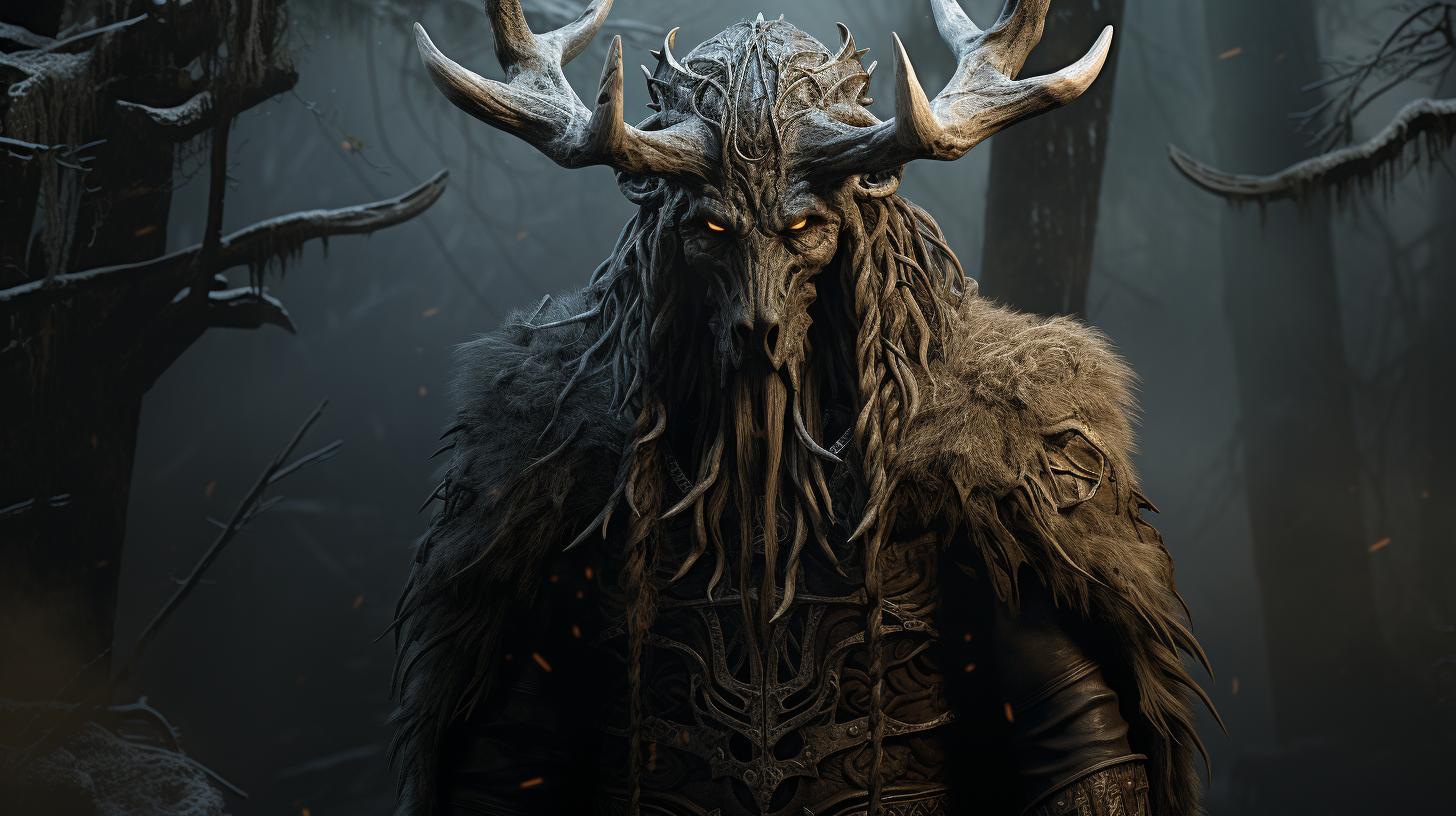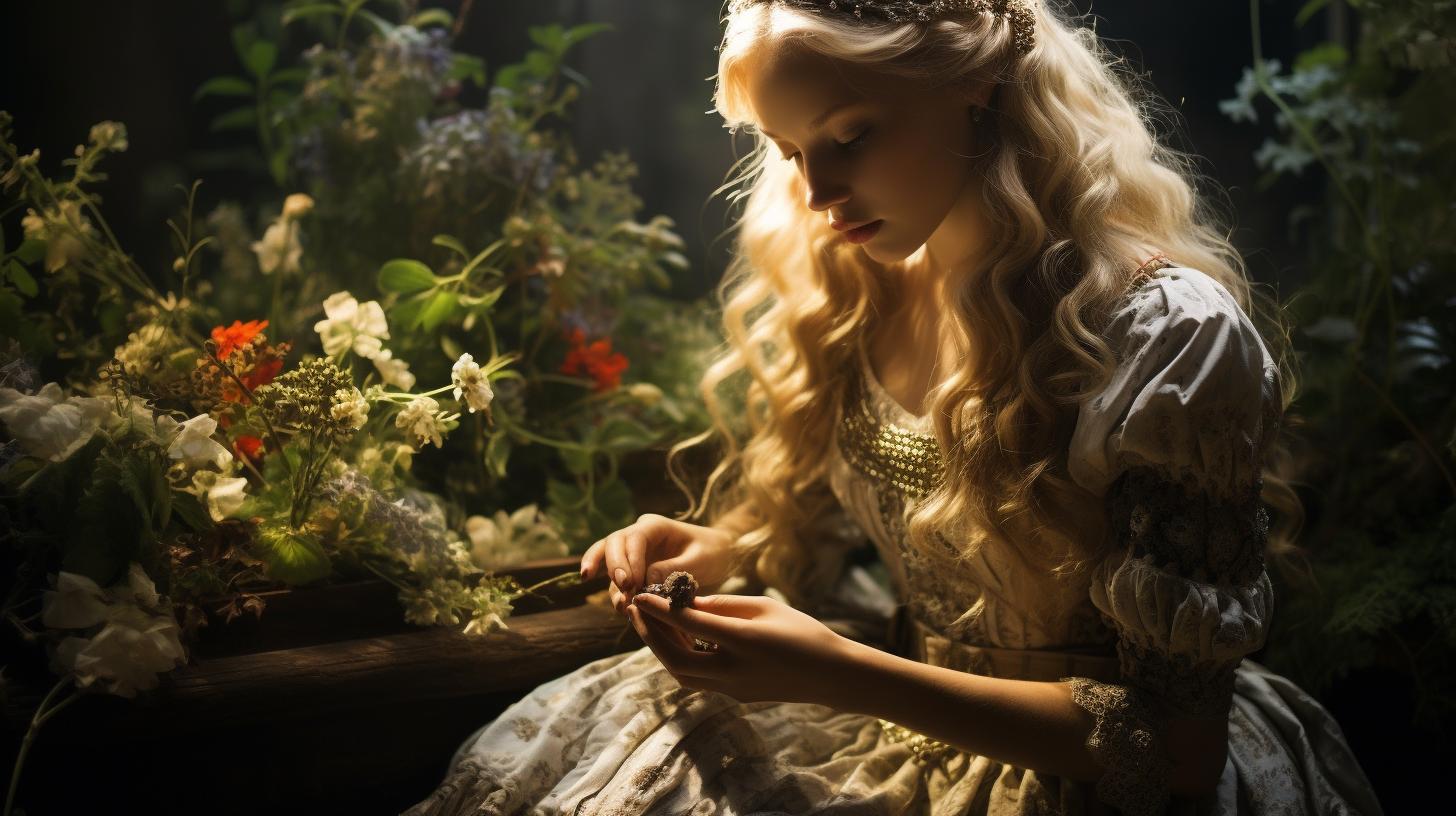Louhi Goddess: The Mysterious Power of the Finnish Mythology Queen
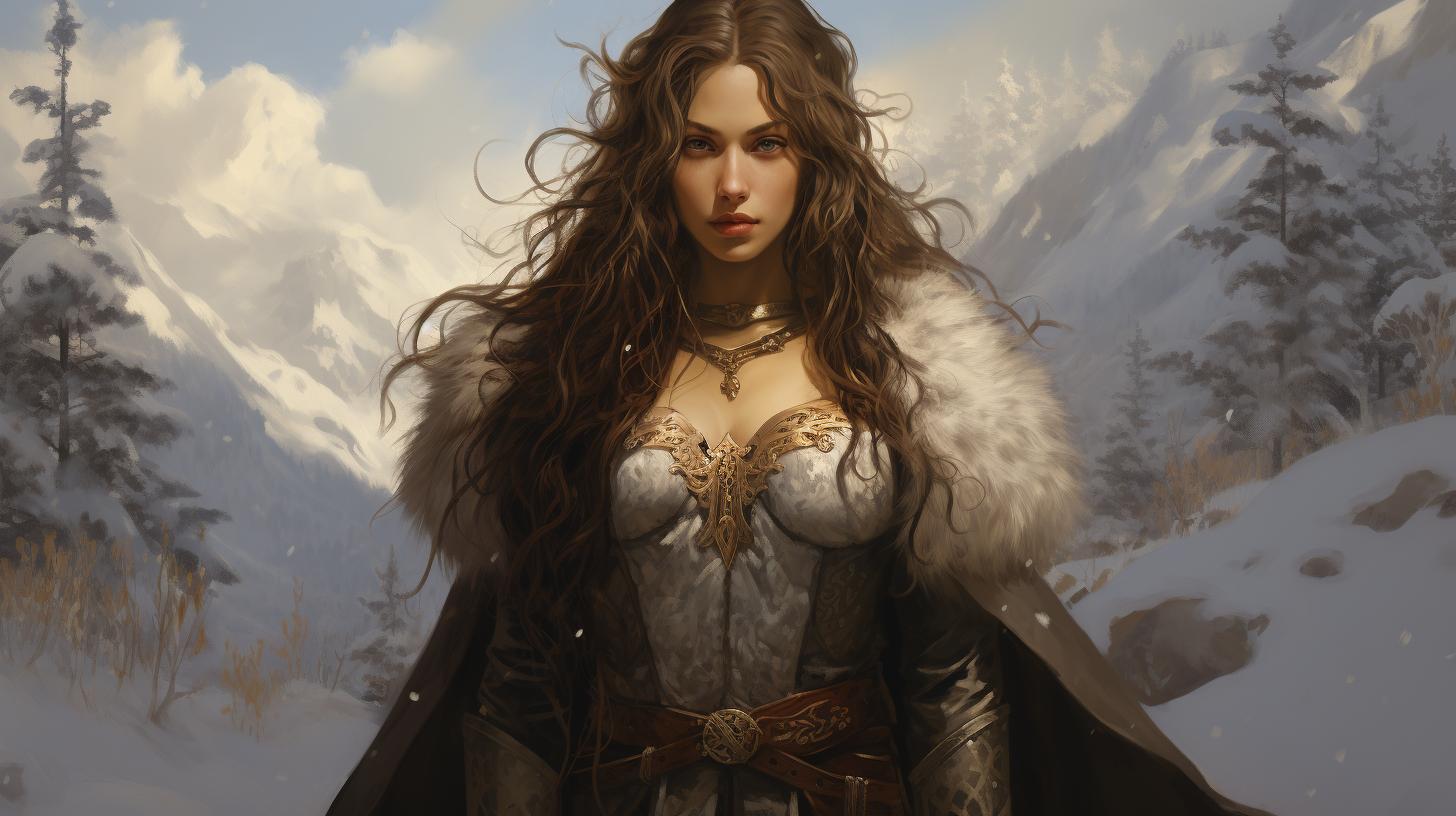
Louhi goddess, a prominent figure in Finnish mythology, is known as a powerful witch and ruler of Pohjola. With extraordinary magical abilities, she can shape-shift, control the weather, and even give birth to strange and monstrous creatures.
This article explores the origins of Louhi, her role in Finnish culture, her connection to other witch goddesses, and her quest for power, including the intriguing myth of the Sampo. Discover the enduring legacy of Louhi in Finnish mythology and her influence on contemporary art, music, and film.
The Legend of Louhi Goddess
In the rich tapestry of Finnish mythology, Louhi stands as a captivating figure, shrouded in mystery and power. Often depicted as a powerful witch and the ruler of Pohjola, Louhi’s legend has left an indelible mark on Finnish culture and folklore.
Stories of her extraordinary abilities and commanding presence have been passed down through generations, captivating both young and old with tales of her enigmatic personality.
Louhi’s character is complex and multifaceted, embodying both darkness and strength. Described as a sorceress with separated teeth and a prominent nose, she possesses remarkable magical prowess. Her shape-shifting abilities, control over the elements, and dominion over the movements of the sun and moon are but a few examples of her immense power.
Throughout Finnish mythology, Louhi’s role as a resolute and intelligent leader inspires both fear and respect. Her decisive and cunning nature makes her a force to be reckoned with, as she navigates the intricate landscapes of power and influence.
Though information about her husband, the Lord of Pohjola, remains scarce, her daughters, known as the Maidens of Pohjola, are renowned for their breathtaking beauty.
To uncover the origins of Louhi, we must delve into the realm of the Sami goddesses, who are intricately linked to themes of life, death, and feminine divinity.
Louhi’s alternate name, Loviatar, derives from the Finnish expression “langeta loveen,” describing the trance-like state a shaman enters. The ancient meaning of her name, “lovi,” alludes to a doorway, entrance, and vagina, symbolizing her connection to mysticism and female independence.
While earlier myths of the Uralic tribes depict a male waterfowl as the first ruler of the underworld, Louhi eventually ascended to become the goddess of the underworld.
In later myths, she is depicted as an elderly woman who gives birth to all the malevolent forces in the world, including diseases, pain, and death. In the epic Kalevala, Louhi takes on the role of the malevolent witch of the north, further expanding her archetype in Finnish folklore.
Louhi’s attributes and powers have striking parallels with other witch goddesses found in various cultures. She embodies the qualities of a seeker, an oracle, and a keeper of hidden knowledge.
Louhi represents freedom, independence, magic, intuition, and self-confidence. Wolves, snakes, lizards, and dragons are her sacred animals, further emphasizing her connection to the wild and mysterious forces of nature.
Intriguingly, Louhi is not the only deity associated with the theme of femininity and protection in Finnish and Sami mythology. Madderakka, the Earth goddess in Sami mythology, is entrusted with the fertility and wellbeing of pregnancies.
Sarakka is the protector of women, particularly during childbirth, while Juksakka safeguards men and children, steeped in the realm of hunting. Uksakka, the gatekeeper and midwife, protects entrances and aids in safe deliveries.
Together, these deities form a collective force, safeguarding fertility, pregnancy, and the well-being of women and children.
Louhi’s pursuit of power is highlighted in the captivating myth of the Sampo, a magical object crafted by the Son of the Forge, Ilmarinen, specifically for Louhi. While the Sampo is eventually stolen by Ilmarinen and Väinämöinen, Louhi relentlessly pursues them.
In the ensuing battle, the Sampo shatters into pieces, but its power remains, ensuring bountiful harvests and fertility.
The realm of Pohjola, over which Louhi rules, is a land shrouded in mystery and associated with the underworld. Situated in the north, it holds connections to the fringes of the universe, existing beyond known reality.
Pohjola’s power and Louhi’s governance create a captivating backdrop for the tales and adventures that unfold within Finnish mythology.
Louhi, despite being often portrayed as malevolent and demonized in later myths, remains an integral figure in Finnish folklore. Her influence extends beyond ancient tales and continues to inspire various artistic expressions, including literature, music, and film.
To immerse oneself fully in the rich tapestry of Finnish mythology, the exploration of works such as “The Kalevala” and its companion text “The Kanteletar,” as well as films like “Sampo” and “Jade Warrior,” is highly recommended.
The Mythology of Finnish Goddesses
In Finnish mythology, numerous goddesses hold significant roles, representing various aspects of nature, power, and femininity. Two notable goddesses in Finnish mythology are Louhi, the powerful witch and ruler of Pohjola, and Vellamo, the enchanting goddess of the sea.
Louhi: The Powerful Witch and Ruler of Pohjola
Louhi is a prominent figure in Finnish mythology, depicted as a formidable witch with extraordinary magical abilities. As the ruler of Pohjola, she is feared and respected for her intelligence and resolve.
Louhi’s shape-shifting prowess, control over weather and celestial bodies, and even the ability to heal and give birth to strange creatures showcase her immense power.
Vellamo: The Enchanting Goddess of the Sea
Vellamo is the goddess who rules over the seas and waters in Finnish mythology.
She is often associated with the beauty and mystique of the sea. Vellamo is described as both gentle and fierce, embodying the vastness and unpredictability of the ocean. Sailors and fishermen would seek her favor and protection during their journeys.
The mythology of Finnish goddesses encompasses a diverse range of characters, each contributing to the rich tapestry of Finnish folklore and beliefs. With their unique qualities and roles, Louhi and Vellamo represent the powerful and captivating aspects of the divine feminine in Finnish culture.
Exploring the Origins of Louhi and Finnish Mythology
Tracing the Sami Goddess Connections
The origins of Louhi and Finnish mythology can be traced back to the Sami goddesses, who are associated with the cycles of life, death, the power of the moon, and the divine feminine.
Louhi’s connection to these ancient goddesses highlights her significance in Finnish folklore and the spiritual beliefs of the region.
Unveiling the Ancient Meaning of Louhi’s Name
The name Louhi carries deep symbolism in Finnish mythology. Derived from the Finnish expression ‘langeta loveen,’ meaning to fall into a trance, Louhi’s ancient name reflects her association with mystical powers and shamanic practices.
The word ‘lovi,’ meaning door, entrance, and vagina, adds to the enigmatic nature of her name, hinting at her role as a gateway to hidden realms and female empowerment.
Louhi Goddess and her Role in Finnish Culture
In Finnish culture, Louhi holds a fascinating and complex role as a powerful witch and ruler.
She has been depicted in various forms of art and literature, captivating the imagination of artists and writers alike.
Depictions of Louhi in Art and Literature
Louhi’s portrayal in art often emphasizes her dark and mysterious nature. Artists have depicted her with her distinct features, such as separated teeth and a prominent nose, highlighting her fierce and intriguing presence.
In literature, Louhi is often portrayed as a formidable character with exceptional magical abilities, commanding respect and fear from those around her.
Throughout Finnish history, Louhi’s image has been reimagined and interpreted by different artists and writers, further cementing her status as a prominent figure in Finnish mythology.
Louhi’s Influence on Finnish Folklore and Traditions
Beyond artistic depictions, Louhi’s influence extends to Finnish folklore and traditions. Her name and stories are woven into the cultural fabric of Finland, shaping beliefs and customs passed down through generations.
As a powerful witch and ruler of Pohjola, Louhi embodies themes of power, femininity, and independence. She represents the fearsome and untamed aspects of nature, garnering both awe and respect from the Finnish people.
Finnish folklore and traditions often incorporate tales and rituals associated with Louhi. Her legends are reenacted in festivals, oral storytelling, and traditional ceremonies, preserving her legacy and keeping her presence alive in the hearts and minds of the Finnish people.
- • Finnish art highlights Louhi’s dark and mysterious nature.
- • Literature portrays Louhi as a formidable character with extraordinary magical abilities.
- • Louhi’s image has been reimagined by different artists throughout history.
- • Her influence extends to Finnish folklore and traditions.
- • Louhi represents power, femininity, and independence.
- • She is celebrated in festivals, storytelling, and traditional ceremonies.
The Epic Tales and Adventures of Louhi and Lemminkainen
The stories surrounding Louhi and Lemminkainen are among the most captivating in Finnish mythology.
These tales, which have been passed down through generations, showcase the dynamic relationship between the powerful goddess and the heroic figure.
The Kalevala: Louhi’s Presence in the National Epic
In the epic poem, The Kalevala, Louhi plays a prominent role as a formidable antagonist. Her encounters with the key characters, such as Väinämöinen and Ilmarinen, are filled with tension and conflict.
Louhi’s cunning and magical prowess make her a captivating character throughout the narrative.
Lemminkainen: The Heroic Figure Linked to Louhi
Lemminkainen, a brave and reckless hero, finds himself entangled in the schemes and challenges orchestrated by Louhi. He embarks on various quests and adventures, facing numerous trials and tests of bravery.
His encounters with the goddess highlight the clash between his audacity and her malevolence.
Whether it’s Lemminkainen trying to steal treasures from Pohjola or engaging in battles against Louhi’s forces, their interactions form a central narrative within Finnish mythology.
The stories explore themes of bravery, cunning, and the complex nature of power dynamics between mortals and the divine.
The Powers and Attributes of Louhi Goddess
Louhi, the powerful witch and ruler of Pohjola, possesses a range of extraordinary powers and attributes that set her apart in Finnish mythology. This section delves into the magical abilities and shape-shifting talents that Louhi commands, along with her enigmatic connection to the moon and wolves.
Magical Abilities and Shape-Shifting Talents
Louhi wields exceptional magical abilities, granting her immense control over various aspects of the natural world. She possesses the power to change her form at will, taking on different appearances as she pleases.
This shape-shifting talent allows her to assume both human and animal forms, making her an elusive and formidable force.
Alongside her shape-shifting talents, Louhi exhibits mastery over the elements, demonstrating control over the weather itself. She can conjure storms, summon powerful winds, and manipulate the forces of nature to her advantage.
This remarkable ability further accentuates her dominion in Pohjola and instills fear and respect among all who know of her powers.
Louhi’s Connection to the Moon and Wolves
Louhi shares a profound connection with the moon, acting as a conduit for its influence and power. This lunar affiliation symbolizes her mystical bond with the celestial realm and highlights her association with femininity, intuition, and the ebb and flow of natural cycles.
The moon’s radiance and mysterious allure mirror Louhi’s enigmatic nature and amplify her authority as a divine figure.
In addition, Louhi’s connection to wolves further emphasizes her influence and strength. The wolf, a creature both revered and feared, embodies primal instincts, cunning, and the untamed forces of nature.
As a guardian and ally of these majestic creatures, Louhi harnesses their wild prowess and incorporates their essence into her fierce persona, signifying her indomitable spirit and connection to the untamed wilderness.
- Louhi possesses shape-shifting abilities, enabling her to assume different forms, both human and animal.
- She commands control over the weather, conjuring storms and manipulating natural forces to her advantage.
- Louhi has a profound connection to the moon, representing femininity, intuition, and the rhythmic cycles of nature.
- Her affiliation with wolves symbolizes her primal strength and alignment with untamed wilderness.
A Comparative Analysis: Louhi and Other Witch Goddesses
Louhi and Loviatar: Similarities and Differences
Within the realm of witch goddesses, Louhi and Loviatar share certain attributes while also differing in their characteristics.
Both are powerful figures associated with magic and female divinity, embodying the independence and intuition often ascribed to witch deities. However, Louhi’s role as a ruler and leader sets her apart from Loviatar.
While Louhi commands Pohjola and possesses extraordinary magical abilities, Loviatar is primarily associated with suffering and pain. She is often depicted as the bringer of diseases and afflictions, contrasting with Louhi’s ability to heal and create unique creatures.
Exploring Louhi’s Affinities with Witch Deities in Other Cultures
Beyond her connections within Finnish mythology, Louhi reveals similarities and shared characteristics with witch deities from different cultures. In various mythologies, goddesses associated with magic, knowledge, and feminine power demonstrate parallels to Louhi.
For instance, Hecate in Greek mythology is linked to witchcraft, crossroads, and moon magic, echoing Louhi’s connection to the moon and her magical abilities. The Celtic goddess Cerridwen, known for her transformative powers and association with wisdom, bears resemblance to Louhi in her shape-shifting abilities and ties to arcane knowledge.
- Other witch goddesses with affinities to Louhi include:
These connections highlight the enduring presence of witch goddess archetypes across cultures and emphasize the universal fascination with powerful, magical female figures.
The influences and parallels found among these deities offer further insight into the timeless allure and significance of Louhi in the broader context of witch mythology around the world.
Unveiling the Mysterious Sampo: Louhi’s Quest for Power
Introduction
The fascinating myth of the Sampo holds a significant place in Finnish mythology, and it is intricately connected to Louhi’s quest for power.
This section explores the enigmatic nature of the Sampo and its profound symbolism within Finnish folklore.
The Intriguing Myth of the Sampo
The Sampo is a mystical object that plays a central role in the Kalevala epic and Louhi’s narrative. This subtopic delves into the captivating story of the Sampo, its origins, and the events surrounding its creation and possession.
Symbolism and Significance of the Sampo in Finnish Mythology
The Sampo carries profound symbolism, representing abundance, prosperity, and cosmic harmony. This section explores the various interpretations and meanings attributed to the Sampo in Finnish mythology and its relevance to Louhi’s insatiable desire for power.
- The Sampo as a source of wealth and fertility
- The Sampo as a symbol of control over nature and the elements
- The Sampo as a representation of cosmic order and balance
Louhi Goddess in Modern Popular Culture
Louhi goddess continues to captivate and inspire modern popular culture, leaving an indelible mark on various artistic mediums.
Her mythical power and intriguing persona have found representation in contemporary art and music, as well as in film adaptations and references within media.
Louhi’s Influence on Contemporary Art and Music
Artists and musicians, drawn to the mystique of Louhi, have depicted her in their works, showcasing her as a symbol of female power, magic, and independence.
Through paintings, sculptures, and installations, Louhi’s enigmatic presence resonates and sparks the imagination of viewers.
In the world of music, Louhi’s aura has inspired numerous composers and performers to create compositions that evoke her dark and enchanting essence.
From haunting melodies to powerful symphonies, the musical interpretations of Louhi goddess carry her mythological legacy forward, captivating audiences with their evocative storytelling.
Film Adaptations and References to Louhi in Media
Louhi’s captivating story has also found its way onto the silver screen, with film adaptations that bring her myth to life.
Through these cinematic interpretations, audiences are transported into the enchanting world of Finnish mythology, where Louhi’s complex character is portrayed in all her formidable glory.
Furthermore, references to Louhi can be found in various forms of media, including literature, television series, and video games.
Writers and creators often draw inspiration from Louhi’s powerful and cunning nature to craft intriguing narratives and memorable characters, adding depth and mystique to their storytelling.
- Contemporary artists and musicians celebrate Louhi’s power and independence through their works.
- Film adaptations bring the enchanting world of Finnish mythology to the big screen.
- References to Louhi in literature, television, and video games add depth to storytelling.
With her enduring presence in popular culture, Louhi goddess continues to fascinate audiences, reminding them of the timeless allure of ancient mythologies and the depth of female characters within them.
Unraveling the Legacy of Louhi Goddess
In the vast realm of Finnish mythology, Louhi goddess has left an enduring impact that continues to captivate and fascinate to this day. Her presence looms large, influencing various aspects of Finnish culture and artistic expressions.
Let us delve into the everlasting legacy of Louhi, exploring her profound impact on Finnish mythology and the continued fascination surrounding her in the 21st century.
Louhi’s Enduring Impact on Finnish Mythology
As one of the central figures in Finnish mythology, Louhi goddess has shaped the narratives and beliefs of the Finnish people for centuries.
Her portrayal as a powerful witch and ruler of Pohjola has granted her a prominent role in the pantheon of deities. Louhi’s magical abilities, cunning leadership, and mysterious nature have contributed to her enduring legacy as a complex and mesmerizing figure.
Throughout Finnish folklore and literature, Louhi’s cunning and formidable presence have been woven into tales and epics, such as the renowned Kalevala. Her pursuit of power, clashes with heroic figures like Lemminkainen, and possession of the mythical Sampo have solidified her position as a crucial character in Finnish mythological narratives.
The Continued Fascination with Louhi in the 21st Century
Even in the rapidly evolving contemporary world, the allure of Louhi goddess remains vibrant. Artists, authors, and filmmakers continue to draw inspiration from her enchanting persona, creating works that explore and reimagine her character.
Paintings, sculptures, and literary adaptations continue to showcase her formidable presence and enigmatic qualities.
The enduring fascination with Louhi can be attributed to her strong and complex personality, her association with female empowerment, and her representation of untamed nature and magical forces.
Her presence in popular culture serves as a testament to the timeless allure of mythology and the enduring impact of powerful, captivating characters like Louhi goddess.
Louhi’s legacy permeates Finnish culture, generating curiosity and admiration for her captivating qualities.
As the world evolves, the profound influence of Louhi continues to captivate the imagination, ensuring her place as a revered and celebrated figure in Finnish mythology.
.

